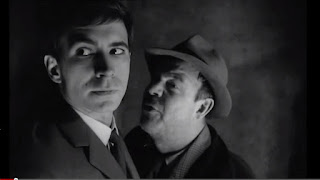The Artist won
five Oscars at this year’s Academy Awards including Best Picture, Best Actor,
and Best Director. Not bad for a black and white silent French movie. A
sensation at the Cannes Film Festival back in May 2011 the film was quickly
snapped up by film producer Harvey Weinstein. An expert at distributing movies
and getting them noticed by the Academy Weinstein previously led films as diverse
as The Crying Game (1992, Neil
Jordan), The English Patient (1997,
Anthony Minghella), and The King’s Speech
(2011, Tom Hooper) to box office success and the Oscars.
Silent movie star George
Valentin (Dujardin) basks in the success of his latest movie. Accompanied
everywhere onscreen and off by his beloved canine sidekick Valentin is the
biggest star in town, but his refusal to adapt to the arrival of talking
pictures puts his career in jeopardy. A young starlet Peppy Miller (Bejo) whom
Valentin helped get started in Hollywood
Director Michel Hazanavicius
and Dujardin previously worked together on a couple of comedies OSS 117: Cairo Nest of Spies (2006) and
its sequel OSS 117: Lost in Rio (2009).
Expertly sending up the spy movie, most notably the Connery era Bonds they
showcased Dujardin’s physical athleticism and his ability to make a conceited
idiot likeable. Hazanavicius skilfully recreated the look and feel of the
Sixties spy film so successfully both of these movies seemed to belong entirely
to the period they were set in. The
Artist too feels like a genuine silent era film, right down to its use of
intertitles and its reliance on composer Ludovic Bource’s wonderful score to
accompany the images.
Valentin bears a passing resemblance
to silent screen star Douglas Fairbanks, one of the most charismatic and
physically agile performers ever to grace the screen. Footage from Fairbanks Fairbanks Fairbanks
Though cult filmmaker Guy
Maddin has directed full length silent movies, notably a stunning ballet
version of Bram Stoker’s novel Dracula (2002)
his work is only really of interest to film buffs. The Artist however succeeds as a loving tribute to the silent era
and as a mainstream crowd-pleaser. Cute dog too.















